1. Concert tickets
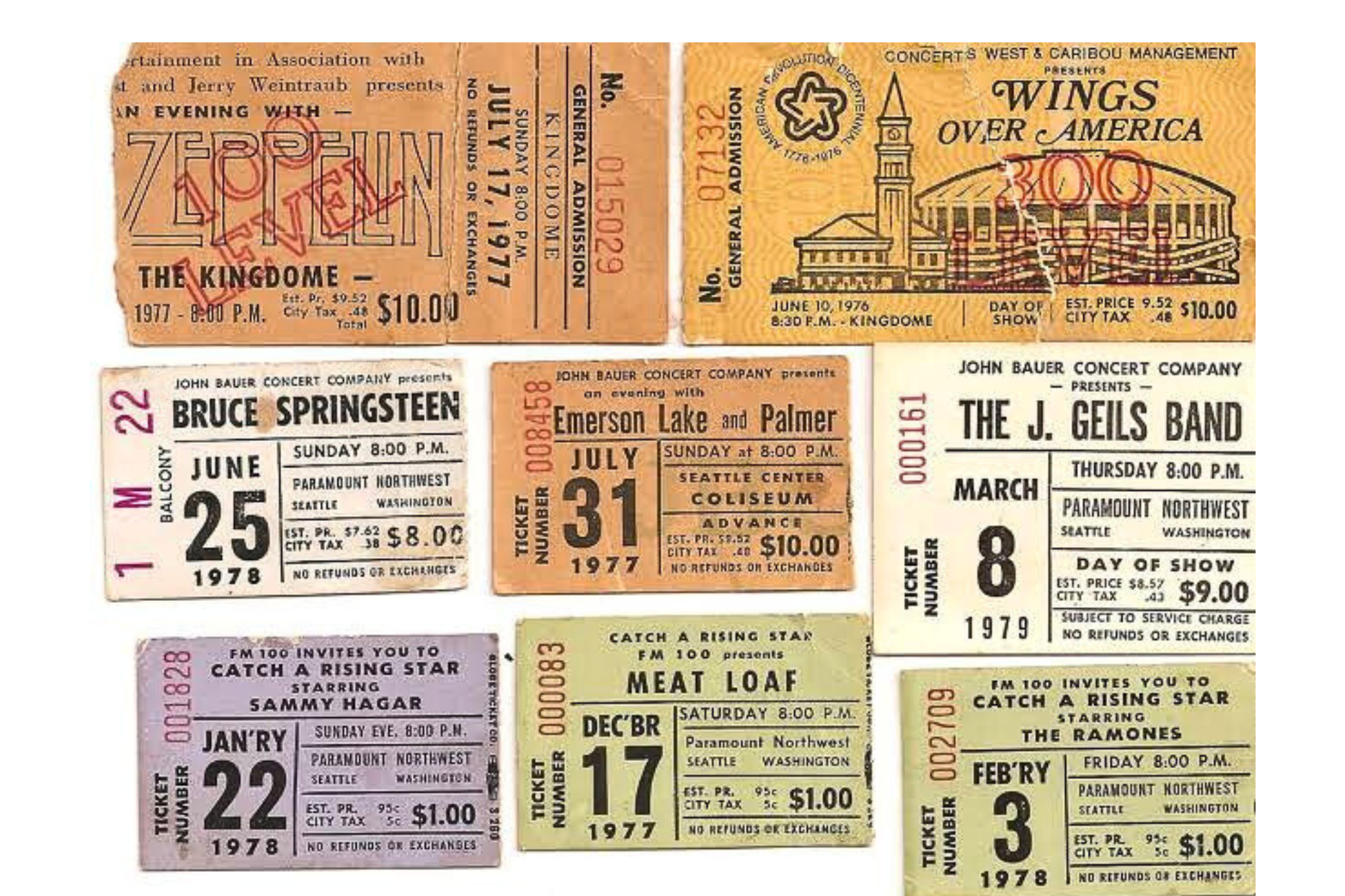
Before our lives moved onto screens, so much of what mattered was captured on paper. Each one had weight, texture, and a personal touch that can’t be duplicated by pixels. From tickets tucked into wallets to postcards tacked on kitchen corkboards, these little scraps held stories, milestones, and memories.
Concert tickets weren’t just a pass through the gate, they were proof that you were there when the music shook the rafters. Folded into wallets, slipped into jean pockets, or tucked carefully into scrapbooks, each ticket carried the energy of that night. People kept them long after the show ended, pulling them out years later to remember when their favorite band was still on the rise or when they saw a legendary act one last time. Torn edges, faded ink, and even coffee stains made them more authentic, because they bore the marks of the moment itself. Unlike today’s digital QR codes, which vanish after a scan, those little pieces of paper turned into souvenirs, tokens of joy that lived on bulletin boards or inside shoeboxes of memories.
2. Movie stubs
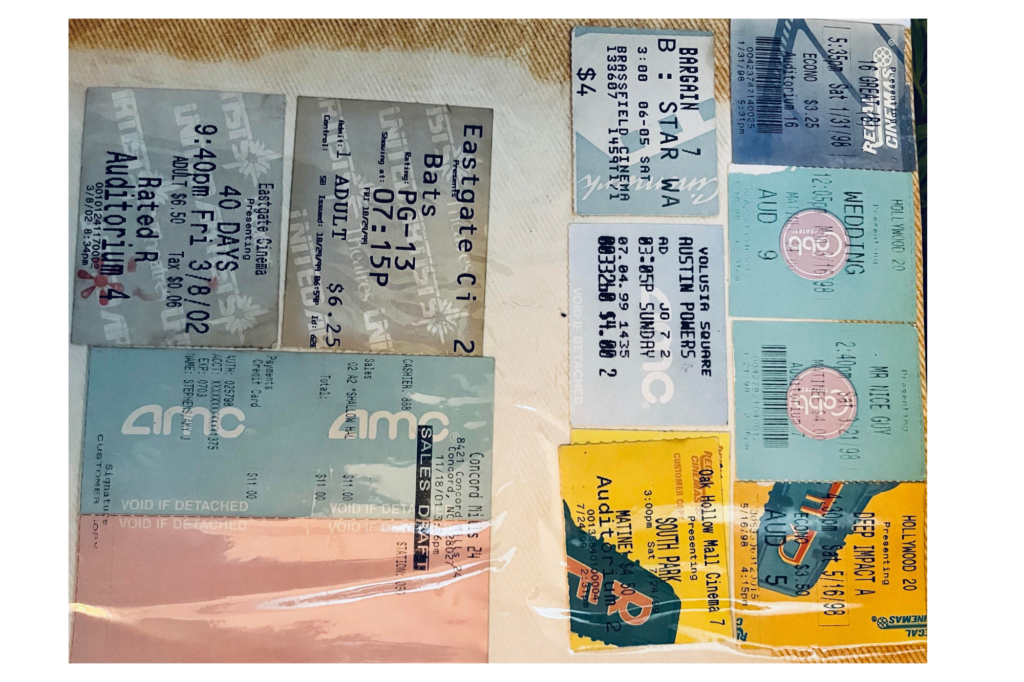
A movie stub was a tiny rectangle of proof that you shared a moment in the dark, whether it was the thrill of a blockbuster, the awe of a big premiere, or the quiet of a first date. These little slips carried the names of films, theaters, and dates, making them time capsules of everyday life. Some people held onto them as a casual habit, tucking them into a pocket or purse and forgetting them until years later. Others collected them with purpose, filling jars or albums as their own kind of diary. Each stub could bring back vivid memories, the smell of buttered popcorn, the laughter in the aisle, or even the heartbreak of a sad ending. Unlike digital confirmations, paper stubs were tangible reminders that you were there, that the film played out in front of you, and that a moment worth saving had happened.
3. Postcards
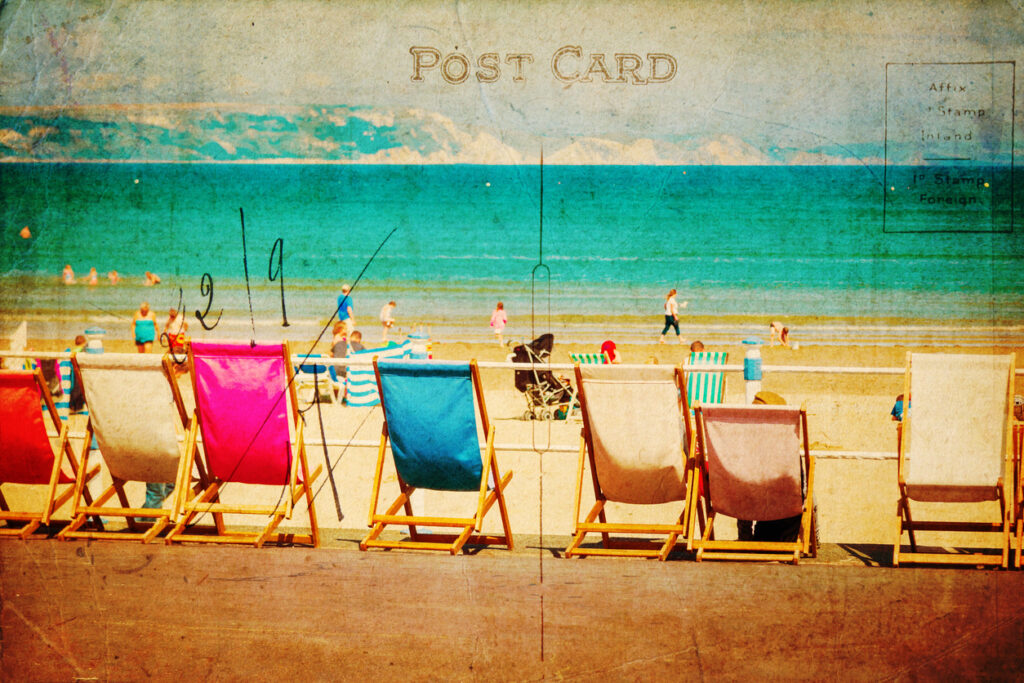
Postcards were the original quick texts, only with glossy pictures and cramped handwriting on the back. Families sent them from vacations, whether it was a sunny beach or a roadside attraction, often with cheerful slogans like “Wish you were here!” The images could be kitschy or beautiful, but what mattered was the personal touch, the familiar scrawl, sometimes rushed at a café table or on a hotel bedspread. Postcards often made it onto refrigerators, tucked into books, or stacked in drawers, carrying with them the scent of travel and the warmth of being remembered. Unlike an email or a social media post, each postcard traveled across miles, passed through hands, and finally landed in a mailbox, giving it weight and presence. Receiving one felt like a small gift, both a greeting and a keepsake that was saved long after the trip was over.
4. Thank-you cards

A thank-you card was more than paper, it was a pause to acknowledge kindness. Whether written for a birthday gift, a wedding favor, or even just a neighborly gesture, these notes were deeply personal. Some came with careful handwriting and heartfelt words, while others were clearly dashed off under pressure, but all carried sincerity. Parents often made children write them as lessons in gratitude, and recipients often saved them as proof that their thoughtfulness had been noticed. Unlike a text message that disappears into a thread, a thank-you card could sit on a desk, propped against a lamp, reminding you of both the giver and the gift. They often came in boxes of assorted designs, each card decorated with flowers, gold trim, or simple lettering, turning even the most routine exchange into something memorable.
5. S&H Green Stamps

For families who collected them, S&H Green Stamps were practically a second currency. Handed out at grocery stores and gas stations, these little sticky stamps were pasted into booklets one by one until a full page gleamed with possibility. The thrill wasn’t just in collecting them, but in flipping through the reward catalog, dreaming of blenders, toasters, or even furniture that could be “bought” without cash. Children often helped lick and stick, turning it into a family ritual, while parents carefully saved until there was enough for something special. Redeeming the booklets felt like a victory, as if everyday errands had quietly paid off with prizes. Though the program faded as shopping habits changed, the stamps themselves lingered in junk drawers and memory boxes, proof of a time when patience and loyalty turned paper into treasures.
6. Coupons
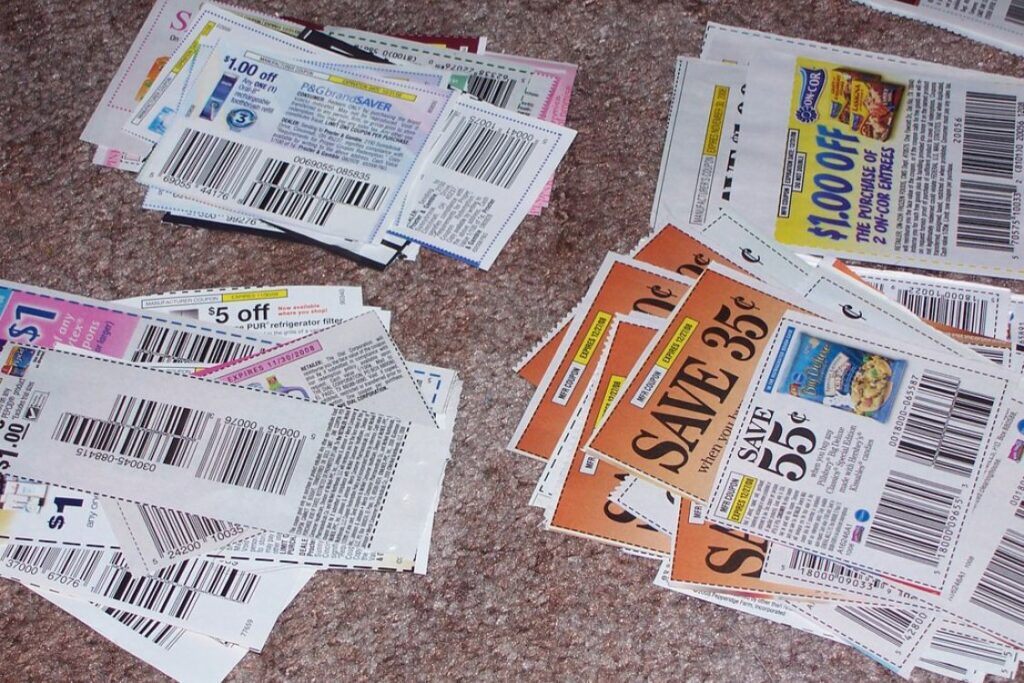
Coupons were more than just clipped squares of savings, they were a ritual. Sunday mornings often meant spreading the newspaper across the table, scissors in hand, carefully snipping out deals for cereal, detergent, or snacks. Families stored them in envelopes or accordion folders, organized by category, and brought them along to the grocery store with a sense of pride. There was something satisfying about handing over a thick stack at the checkout and watching the total drop. Some shoppers became masters at it, combining coupons with sales to walk away with bags of groceries at half price. While digital coupon codes now pop up at a click, paper coupons had weight and presence. They represented a little effort, a little strategy, and a small win in the weekly budget, often celebrated with a smile and the crinkle of paper in the cashier’s hands.
7. Greeting cards
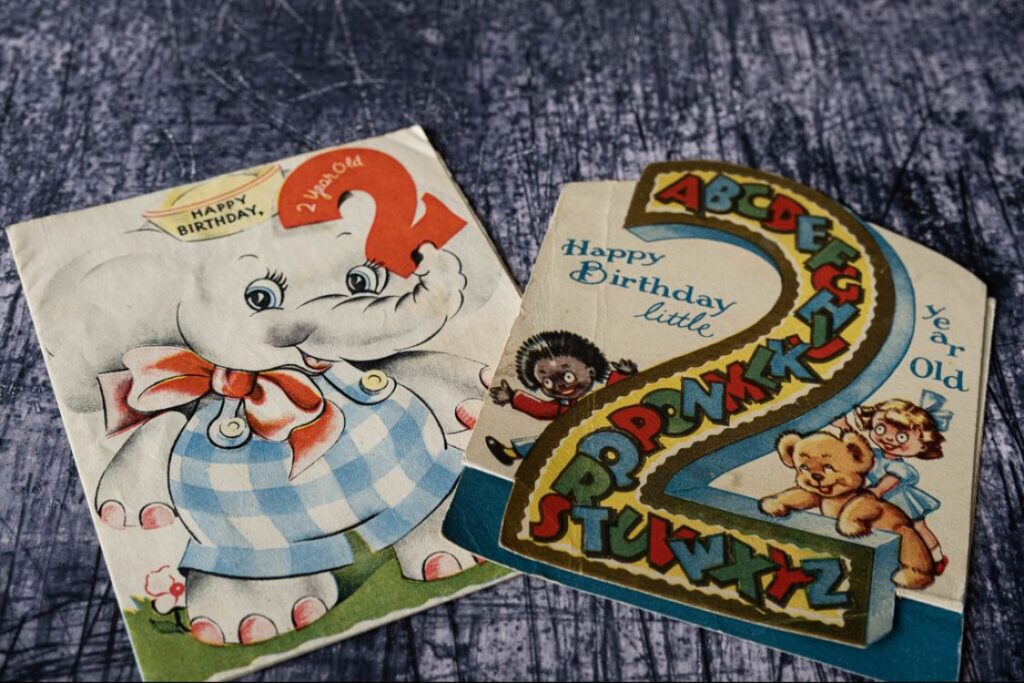
Greeting cards turned everyday moments into keepsakes. Whether for birthdays, graduations, or just to say “thinking of you,” each card carried its own personality, funny, sentimental, glittery, or musical. Some had handwritten notes that were as meaningful as the printed message inside, while others were tucked into gifts and saved for years. Kids loved cards that played a tune when opened, even if the little sound chip eventually wore out. Parents often kept especially touching cards in boxes, where they became mementos of milestones long past. Unlike quick social media wishes today, paper cards lingered on mantels, bookshelves, or refrigerators, serving as colorful reminders of love and celebration. Each crease, fold, and glitter speck told its own story, turning them into tiny artifacts of connection.
8. Air mail envelopes
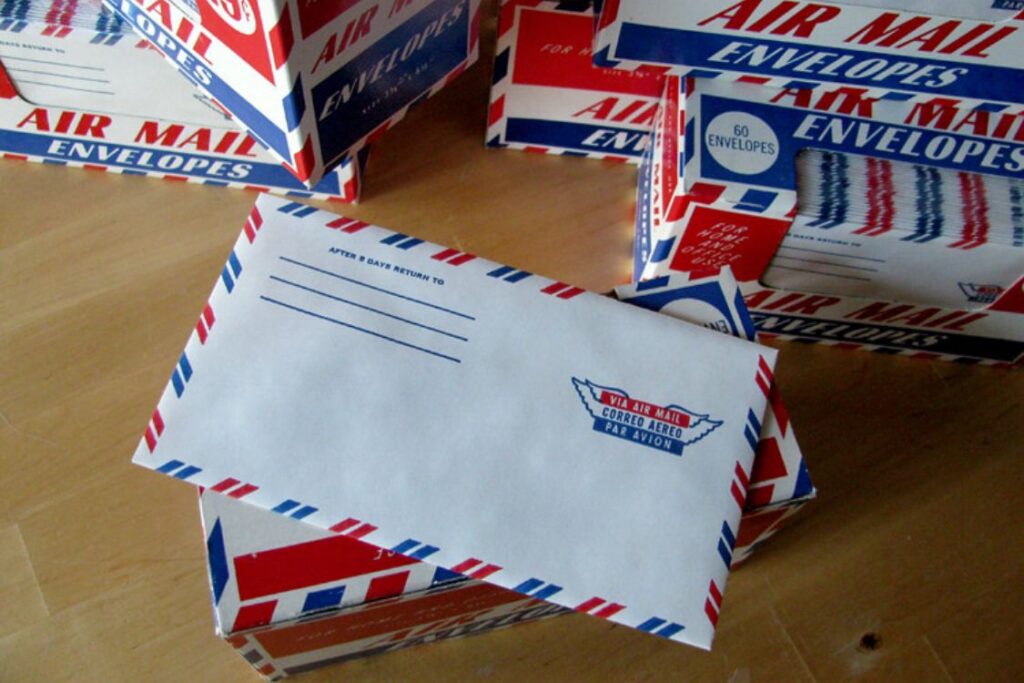
Air mail envelopes had a distinct look, lightweight paper, trimmed with red and blue stripes, and often faintly scented by wherever they’d traveled from. They carried words across oceans, long before instant messages or video calls were possible. Families cherished them, especially when loved ones lived abroad, because each envelope felt like a bridge across distance. The handwriting on the front might be shaky from travel-worn relatives or bold from a friend living overseas, and opening one was like receiving a piece of another world. Many people kept them tucked in drawers or shoeboxes, rereading them years later to feel closer to those far away. Unlike today’s digital updates that disappear with a swipe, these envelopes, and the letters they carried, were proof of patience, effort, and the enduring human need to stay connected.
9. Diaries and journals
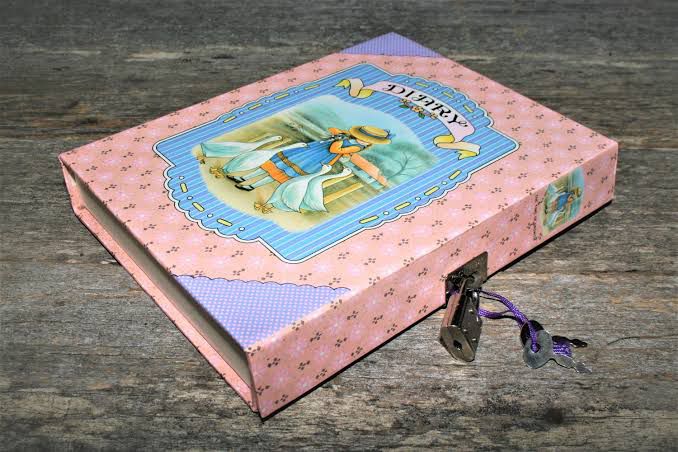
Diaries and journals were private worlds bound in paper. They captured secrets, teenage angst, wild dreams, and sometimes even doodles and song lyrics in the margins. Many came with little locks and keys, though few truly kept out curious siblings. Writing in them was a way to process the day, to confess unspoken worries, or to imagine futures that might never happen. Some journals became long-running records of life, filled cover to cover with pages of memories. Others ended abruptly after a few entries, abandoned but never thrown away. Even now, flipping through an old diary brings back the voice of a younger self, raw and unfiltered in ways a polished social media post never could. Paper journals were more than notebooks, they were mirrors of the soul, kept safe under beds or tucked deep in drawers.
10. Love notes
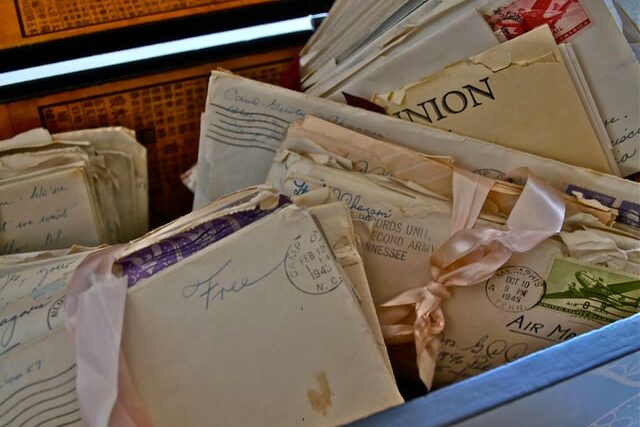
Love notes were the sweetest kind of paper keepsake, folded triangles slipped into lockers, scribbled lines passed in class, or handwritten letters slipped under a door. They were simple but powerful, sometimes clumsy, sometimes poetic, but always treasured. Each note carried the nervous energy of someone daring to put feelings into words. The paper itself often became as precious as the message, creased from being opened and read again and again. For many, these notes became secret treasures, tucked between book pages or kept in shoeboxes, reminders of young love and tender beginnings. Unlike a text message that can vanish with a delete, love notes had permanence. They could be held, unfolded, and felt in your hands, making emotions tangible in a way only ink and paper could.
11. Scrapbooks
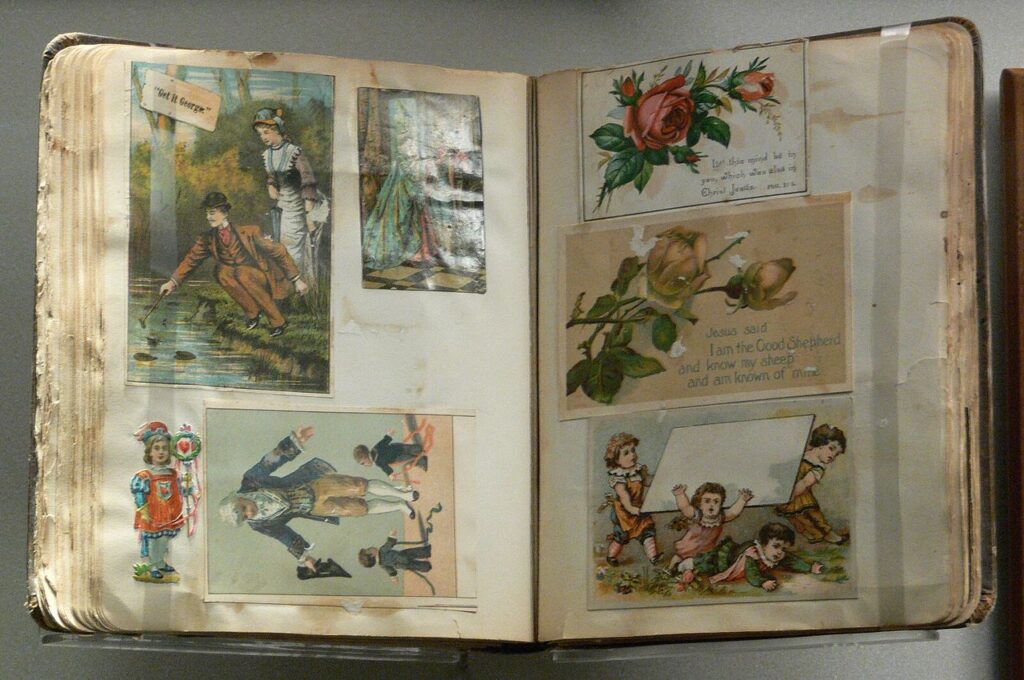
Scrapbooks were memory books made by hand, filled with bits and pieces that meant something only to the person who created them. Inside, you might find birthday cards, dried flowers, ribbons, napkins from special dinners, stickers, and even pressed leaves. Each page was carefully arranged, sometimes decorated with handwritten notes or doodles. Scrapbooks weren’t just about preserving moments; they were about turning them into art, creating a personal story out of paper. Families often built them together, and kids used them to capture summer vacations, school years, or friendships. Flipping through one years later felt like stepping back in time, because the objects weren’t just symbols, they were the very items touched, kept, and saved from those days. Unlike digital photo albums that can feel endless, scrapbooks were finite, tactile, and personal, a labor of love stitched together with glue, tape, and imagination.
12. Wedding invitations
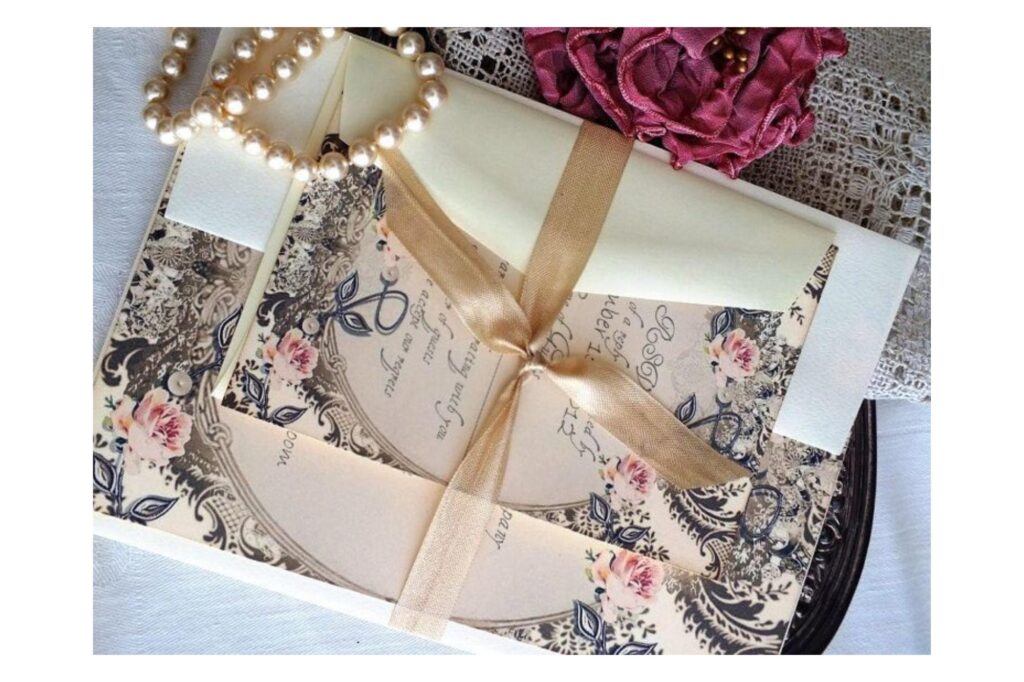
Wedding invitations carried elegance and weight, often printed on thick cardstock with embossed lettering, satin ribbons, or even gold foil. Receiving one felt special, it wasn’t just a notice, but a keepsake marking a major milestone. Families displayed them on refrigerators or tucked them into photo albums, and couples often saved at least one for themselves as part of their wedding memories. Beyond the design, each invitation told a story, the choice of fonts, colors, and wording reflected the couple’s taste and personality. Some were traditional and formal, while others were playful or modern, but all carried the same message: an invitation to witness something life-changing. Unlike digital invites today, paper invitations were meant to be handled, admired, and remembered, making them treasures that lived on long after the wedding day.
13. Baby announcements
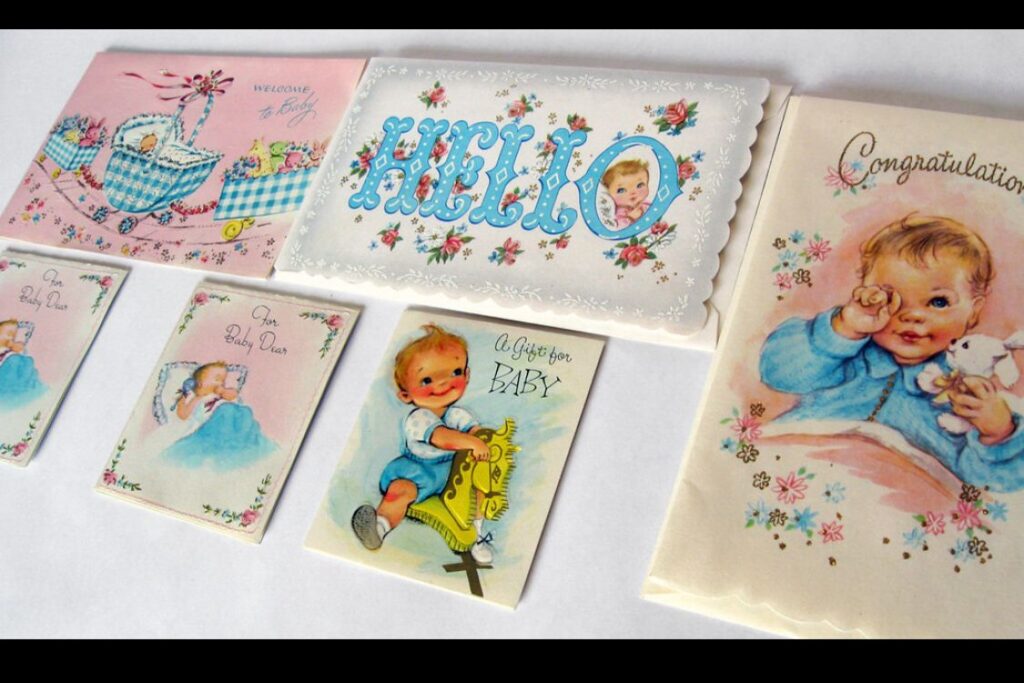
Baby announcements were joyful little envelopes that carried big news. Inside was often a card with the newborn’s full name, weight, and length, sometimes accompanied by a small photo. Families sent them out proudly, sharing their joy with relatives, friends, and neighbors. These announcements usually ended up pinned to bulletin boards, tucked into albums, or saved inside memory boxes, cherished as keepsakes from a child’s very first days. The fonts and designs varied, pastel colors, tiny footprints, or playful illustrations, but the heart of the announcement was always the same: welcoming new life. Unlike a quick text or social media post today, these cards took time to design, print, and mail, making the moment feel more deliberate and meaningful. Holding one in your hands meant you were part of something personal and lasting.
14. Holiday newsletters
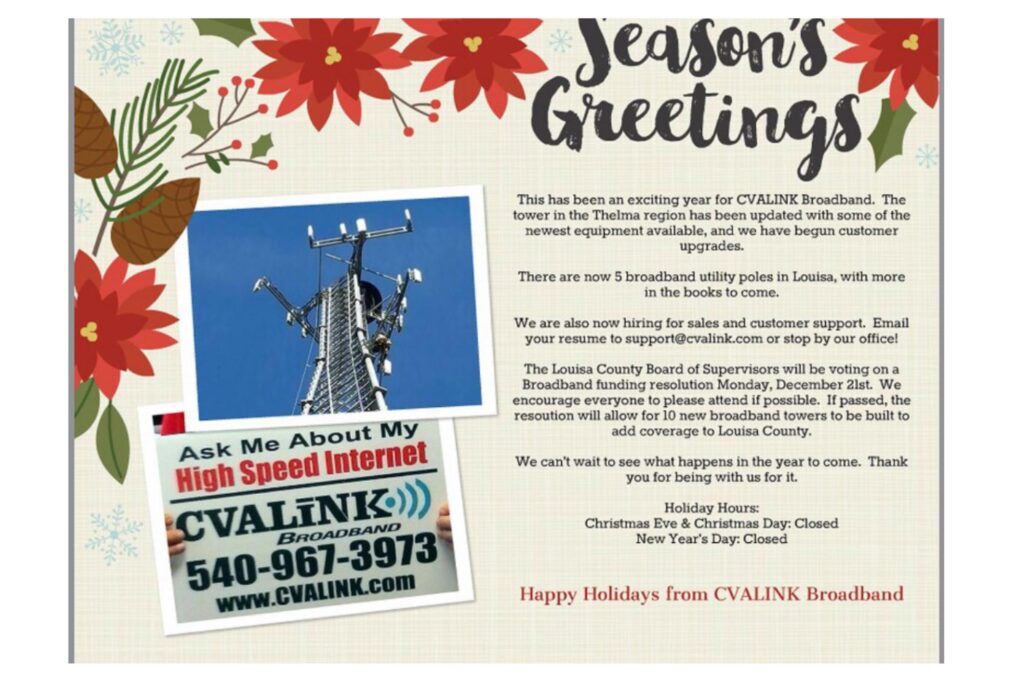
Holiday newsletters were once the highlight of the mailbox in December. Usually typed on a single sheet, sometimes in bright red or green ink, they offered a year-in-review from one family to another, it might also be from companies you patronized frequently. Parents proudly wrote about promotions, new homes, graduations, or little league victories, while kids’ accomplishments often got their own spotlight. Photos were sometimes attached, but more often, the stories stood alone, told in friendly, sometimes exaggerated detail. The fonts could range from elegant scripts to the playful (and often mocked) Comic Sans, but the charm was in the personal touch. These letters were read aloud at dinner tables or tucked into holiday cards, then kept for years as snapshots of a family’s milestones. In an age before social media updates, they were a way of keeping distant friends and relatives close, wrapped in paper and holiday spirit.
15. Handmade signs
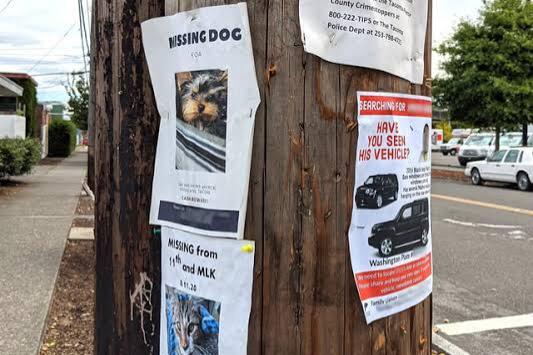
Handmade signs were everyday communication at its most creative. Whether it was a garage sale poster with arrows drawn in thick marker, a “Welcome Home!” banner stretched across a porch, or a lost pet flyer taped to a telephone pole, these signs were crafted with care. The paper often bore smudges of ink, drips of paint, or crinkles from the weather, but that only added to their charm. Families and neighbors rallied around them, following their directions or heeding their calls. A brightly colored yard sale sign might mean a weekend of treasure hunting, while a carefully written banner turned a homecoming into something unforgettable. Though they weren’t meant to last, many of these signs lingered in scrapbooks or attics, reminders of moments when paper and marker carried joy, urgency, or love out into the world.
This story 15 Paper Things You Saved, Pasted, or Cashed In, Before Everything Went Digital was first published on Daily FETCH


